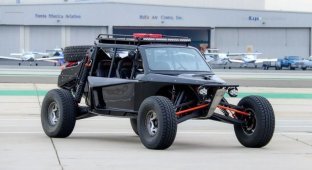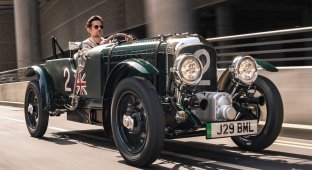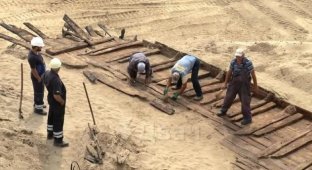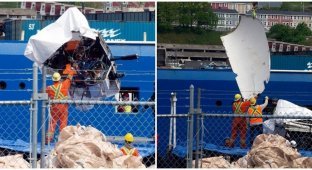War is often called the engine of scientific and technological progress, since it is at such a time that the most unusual inventions can appear that no one would take seriously in a peaceful period. During World War II, the United States adopted the so-called “lake aircraft carriers” USS Sable and USS Wolverine with wheel drive. The first of them will be discussed. 
USS Sable, 1944-1945. FM-2 Wildcat takes off from the deck
The future aircraft carrier was originally a passenger ship. It was built at the American Ship Building Company in 1924 under the name Greater Buffalo. Initially, its length was 158.1 m, width - 17.7 m, draft - 6.5 m, and displacement - 7739 tons.
The ship's hull was steel. It had eleven waterproof compartments and a double bottom, which in turn was divided into sixteen more waterproof compartments. The power plant was a three-cylinder inclined compound steam engine with nine boilers. It drove two side wheels with a diameter of 10 m each.
The steamship had 7 decks, three chimneys and rudders at both ends of the hull to improve maneuverability. But its main features were the interior and amenities. Designed in imitation of the Renaissance, the design style attracted serious attention from the wealthy public. There was even a six-meter fresco on the ship, made by famous American masters. Everything was provided for 1,500 potential passengers: smoking lounges, nightlights, private baths, telephones and even a garage for transporting up to 103 cars. 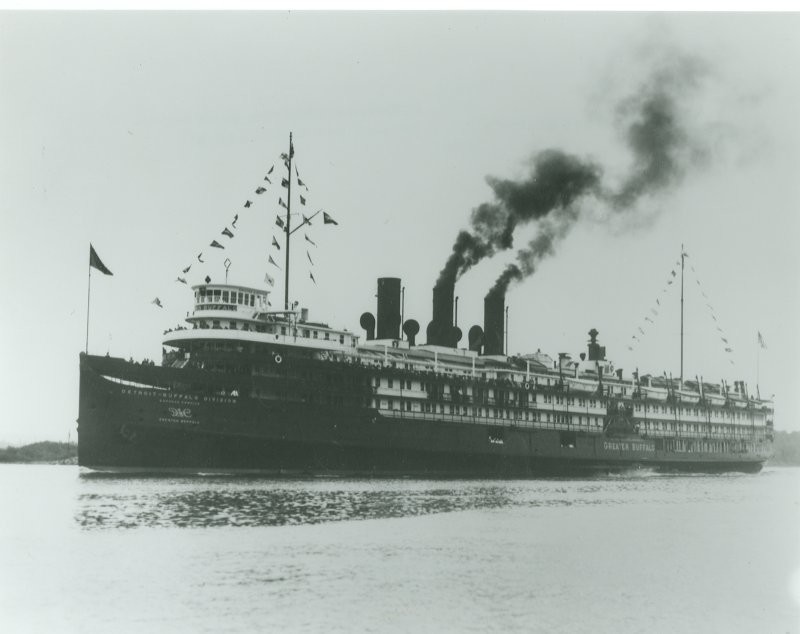
The Greater Buffalo before refitting, 1942
The ship's owner, Detroit and Cleveland Navigation Company, assigned it to work on the Detroit-Buffalo line. When she made her maiden voyage in 1925, the Great Buffalo was the largest steamship on the Great Lakes. But his work did not last long. In 1929, an economic crisis began in the United States. In 1930-1935, the ship simply stood in Detroit, since there were neither passengers nor crew - the latter was constantly on strike, demanding higher wages. All this brought huge losses to the company, so it was decided to bring the ship to Cleveland and rebuild it into a floating hotel. But before the start of the war, these plans were never put into practice.
It was impossible to use real aircraft carriers for training naval pilots due to their acute shortage at the front. Therefore, already in mid-December 1941, the Naval Ministry began to develop ideas for purchasing large ships and turning them into training aircraft carriers. The choice also fell on Greater Buffalo. Firstly, it could be used to build a flight deck 2/3 the length of the deck of an Independence-class aircraft carrier. So if pilots can take off and land on such a training aircraft carrier, then they will certainly be able to master a real one. And secondly, Greater Buffalo was still on the Great Lakes, which means it was reliably protected from the German submarines that flooded the East Coast of the United States.
On August 7, 1942, the ship was purchased by the War Shipping Administration and in September received the name USS Sable. She soon arrived in Buffalo for a refit, during which the superstructure was cut away and the main deck was converted into a steel plate runway. The new superstructure and chimney were moved to the starboard side, and fastenings for storing damaged aircraft were also installed there. In addition, 8 sets of brake cables were installed and training rooms for pilots were equipped. At the same time, the wheeled propulsion system and the old power plant have not undergone any changes. The length of the ship increased from 158.1 to 163 m, and the displacement decreased from 7739 to 6584 tons. 
There is no learning without mistakes. An FM-2 Wildcat fails to land on the deck of the USS Sable, May 1945.
The aircraft carrier entered service on May 8, 1943. Its crew was partially staffed by surviving sailors from the aircraft carrier USS Lexington that was lost in the Battle of the Coral Sea. Sable soon arrived in Chicago, where he remained until the end of the war. After some time, a problem arose: it turned out that due to the low speed and low hull of the ship, some types of aircraft simply did not have enough lifting force to take off. On calm days, takeoff became completely impossible.
Nevertheless, during the war years, more than 17,000 pilots were successfully trained on the USS Sable and its sistership USS Wolverine, who were trained to fly the Grumman F6F Hellcat, Chance Vought F4U Corsair, Douglas SBD Dauntless and Grumman TBF Avenger. In addition, the aircraft carrier became a "testing ground" for the Interstate TDN-1 unmanned attack aircraft. It is worth noting that among the pilots who trained on the USS Sable was the future US President George H. W. Bush. 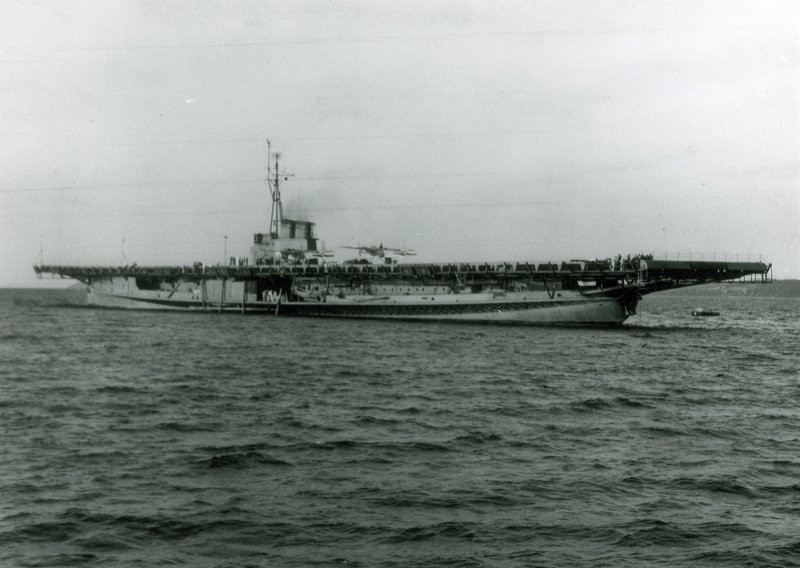
USS Sable. Photo taken August 10, 1943 in West Grand Traverse Bay, near Traverse City, Michigan. Two TDN-1 drones are visible on the deck
After the end of World War II, the need for lake-based aircraft carriers disappeared. The command now has the widest choice among the aircraft carriers built to designate them as training carriers. In addition, the length of the take-off decks of the former steamships did not allow working with jet aircraft, which were actively being put into service. So on November 7, 1945, USS Sable was decommissioned and soon removed from the fleet lists.
For some time there was an idea to turn the lake carrier into a museum ship at the Ohio Great Lakes History Museum Complex, but no money was found for it. So on July 7, 1948, the Maritime Commission sold the ship for scrapping to the HH Buncher Company. The new owners were forced to cut off part of the hull, reducing the width - this was the only way the ship could pass the Welland Canal on the way to Hamilton, Canada for cutting up.
Thus ended the story of one of the most unusual warships - a training aircraft carrier that sailed the lakes on wheeled traction, which was already outlandish by that time. Nevertheless, he made a great contribution to the training of pilots who destroyed the Japanese in the air in the Pacific Ocean.
Add your comment
You might be interested in:














